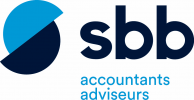13 employer branding maatstaven om de effectiviteit van uw strategie te meten
Hoe effectief is de employer brand strategie van jouw bedrijf? Ongeveer 20% van de HR-beslissingsnemers blijkt het resultaat van hun acties niet te meten. Wiggli bespreekt hoe het aan te pakken. Meet aan de hand van 5 categorieën van te monitoren KPI’s of je strategie effectief tot resultaten leidt.
It is essential to monitor employer branding metrics to measure to effectiveness of your strategy. Unfortunately, nearly 20% of HR decision makers state that they do not analyse the results of the employer brand actions they undertake. How do you go about it? What metrics should you monitor? We explain everything.
What makes a positive and strong employer brand?
Employer brand is all about attracting, engaging and retaining talent. Nowadays we consider a company to have a strong and positive brand image when it meets these three characteristics: good attractiveness, strong engagement and loyal employees.
Attractiveness
61% of companies judge recruitment to be difficult (Labour force needs study 2023). Why? Lack of candidates (85%) and unsuitable profiles (79%). An organisation that rapidly recruits the right profiles and receives qualified applications is therefore a sign of a positive employer brand.
Strong employee engagement
- Work engagement* means the attachment and involvement an employee feels towards his or her company. More specifically, employees are said to be engaged when the organisation’s mission is a driver that makes them want to work. They are driven by the latter’s ambition and want to help it achieve its goals.
On a daily basis, engaged employees adopt some specific forms of behaviour:
- They take initiatives above and beyond what is required by the position;
- They recommend their company to their peers;
- They want to stay with and grow with the company.
Loyal employees
- Loyalty closely linked to satisfying the expectations of the talent. A study into this topic conducted by the company 360Learning highlighted 4 reasons that push employees to resign:
- Remuneration that is not commensurate with their needs;
- A lack of fulfilment and satisfaction at work. The meaning of the work and physical and mental health are the main drivers towards workplace fulfilment;
- Working conditions are a source of stress and tensions within teams: excessive workload, managerial pressure, etc.
- Company culture not aligned with employee values.
Once we know what a positive and strong employer brand looks like, we can identify the useful metrics to monitor to measure the effectiveness of your employer branding strategy Here is a list of 13 KPIs.
What employer branding metrics should you monitor?
The careers site KPIs
The careers site is a showcase for your company where talent can discover job opportunities and the company culture and ambitions. To assess the performance of your careers site, here are the metrics to monitor:
- The bounce rate. This is the percentage of visitors that visit one page of the careers site and leave without viewing any others. The lower the better. The ideal is to aim for a rate somewhere between 41 and 55%. Above 70% you should envisage some corrections.
- The number of pages viewed. This indicator tells us the number of pages a visitor views. The more pages they visit, the more they are interested and incentivised to join the company. It is a sign of a quality audience.
- The average length of a user session. This metric reveals the average time a visitor spends on the careers site. The more time a person spends on your employment site, the more interested they are.
Where can you view this data?
If you have ATS software such as our Wiggli solution, you have access to an Analytics feature to monitor the performance metrics: source of traffic, visitor profiles, rate of engagement, page views, unique visits… If not, then you can use tools such as Google Analytics.
Recruitment KPIs
Recruitment metrics are essential employer brand indicators. Here are the main ones:
- Average recruitment time. A short time period, less than one month, is the sign that you are getting qualified applications and that the recruitment process is well structured.
- The conversion rate for job offers. A good conversion rate is around 35%. Any lower and you may want to review the form and content of your ads to make them more attractive.
- The cost per application. This indicator measures the effectiveness of your employer branding in relation to the budget spent. A high KPI means that the marketing strategy is not appropriate. You should also pay attention to the quality of the CVs you receive.
Where can you view this data?
You can access automated reporting through your ATS. If you do not have recruitment software, you can view these metrics on Google Analytics.
Social media KPIs
The effectiveness of an employer brand strategy is also measured on social media: LinkedIn, Instagram, Facebook, X, Tik Tok… Here are the metrics to scrutinise:
- The number of subscribers to your company pages. This indicator reveals the level of notoriety of your employer brand.
- The number of impressions for your posts.
- The number of online interactions. This encompasses the number of likes, comments, shares and messages received.
Internal brand image KPIs
The employer brand includes an internal aspect. The more positive the employee experience, the more positive your employer brand. A certain number of indicators should be monitored to measure the effectiveness of your internal image:
- The eNPS. The eNPS (Employee Net Promoter Score) lets you know the probability that your employees will recommend your company. To calculate it, they are invited to answer this question on a scale of 0 to 10. The answers are then separated into 3 groups: employees that are promoters, detractors or passives. To calculate the eNPS score, take the % of promoter employees – the % of detractor employees.
- Turnover rate It is calculated in the following way: [(Number of departures in year Y + number of arrivals in year Y) / 2] / workforce on January 1st of year Y. A high rate is the sign of a poor employee experience.
- Number of years of seniority
Reputation KPIs
Before applying to a job offer, talent find out about the company’s reputation by looking at the reviews and recommendations of former and current employees on job sites like Glassdoor. A company with a poor reputation dissuades talent from sending their application. Be sure to consult your online reputation.
So now you know: there are many employee branding metrics. To keep you from getting lost, we advise you to start by targeting 2 or 3 key indicators.
Choose the priority metrics to monitor in line with your employer branding goals
Developing a singular and positive employer brand takes time. You cannot work on all fronts at the same time, so you need to identify your priorities. To do this, we suggest starting with your goals. In concrete terms, what are your motivations? Do you want to refine and strengthen your employer image to attract new qualified talent? To gain the loyalty of your best employees?
Depending on your goals, identify 2 or 3 indicators that allow you to measure the effectiveness of your actions in the short- and long-term.
To sum up, in the same way as any strategy, it’s essential to measure your employer brand to make the right choices. KPIs related to attractiveness, engagement and loyalty offer you some insight into the results of your actions. A simple approach with 2 or 3 monitoring indicators remains the best option when you are launching your employer brand strategy.
Lees ook :












